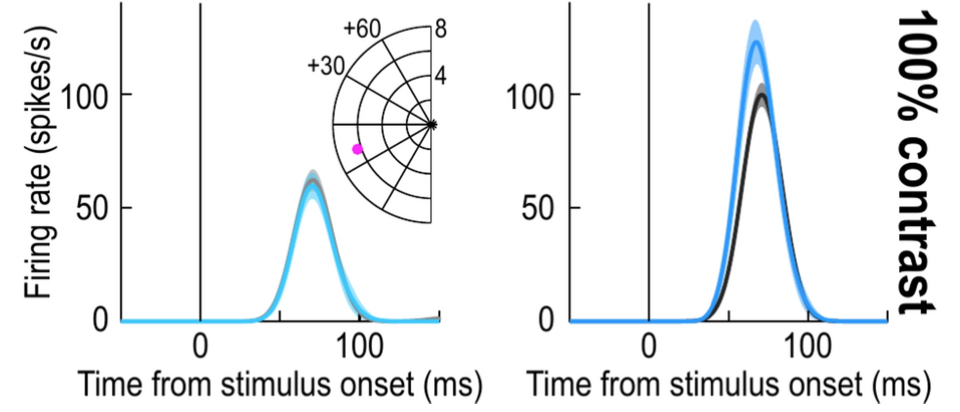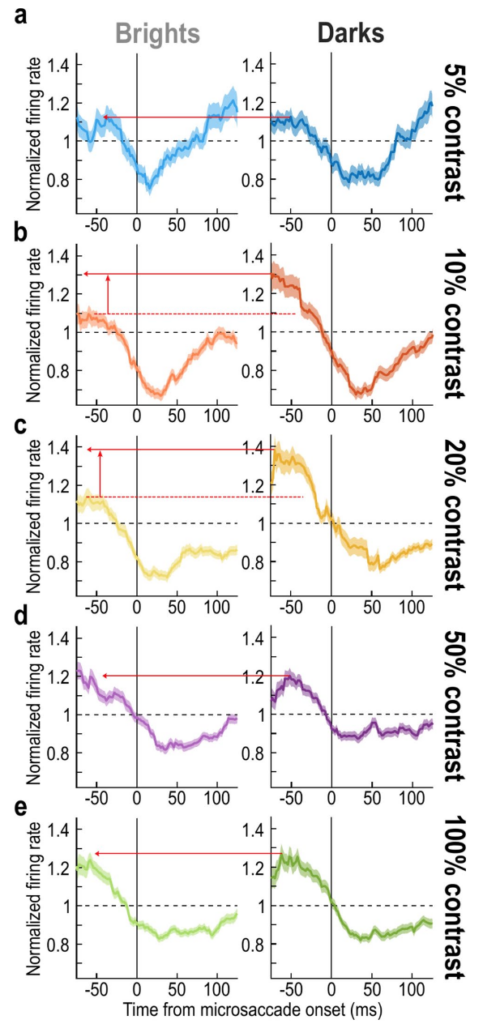We have a new paper just published here. In it, we explored the phenomenon of premicrosaccadic visual sensitivity enhancement. This phenomenon, which we first discovered ten years ago here, is intriguing. In it, the visual sensitivity of neurons in visual-motor brain structures like the superior colliculus (SC) and frontal eye fields (FEF) is enhanced if a peripheral stimulus onset occurs right before the onset of a tiny microsaccadic eye movement. Interestingly, this happens even though the stimulus is at an eccentricity very different from the tiny size of the microsaccade, and that is exactly one aspect of the intrigue associated with this phenomenon.

We previously exploited this phenomenon to demonstrate how performance and neural effects associated with covert visual attention shifts can be mechanistically explained by premicrosaccadic enhancement (e.g. here, here, and here). However, the properties of premicrosaccadic enhancement in the SC were not really further explored. Therefore, in our current study, not only did we replicate this phenomenon robustly, but we also found how it seems to particularly prefer dark stimulus contrasts (image patches darker than the surrounding background).
We had previously explored the visual sensitivity of SC neurons to dark contrasts here. Thus, we were now in a position to investigate how such sensitivity was modulated around the time of microsaccades.
We found that there was stronger premicrosaccadic enhancement of SC visual sensitivity for dark stimuli, but specifically at moderate contrast levels (10%-20%).

This result is noteworthy because its specificity to moderate contrast levels implies that SC contrast sensitivity curves become more saturated for a larger range of contrast levels. Thus, at the time of premicrosaccadic enhancement, SC neurons are particularly good at detecting specifically dark stimulus onsets across many different contrasts, and more so than for bright stimuli (such as faint white clouds over a blue sky). This observation very likely has ecological relevance. For example, moving objects above us are more likely to cast shadows on our retina and thus appear as dark contrasts; such objects are undoubtedly a relevant aspect of our interactions with the environment, implying a useful role for stronger premicrosaccadic enhancement of dark stimuli.

We are now further exploring the functional implications of our discovery using a variety of approaches, and also how these functional implications might differ from those expected in cortical visual areas, such as the primary visual cortex. Please stay tuned!
